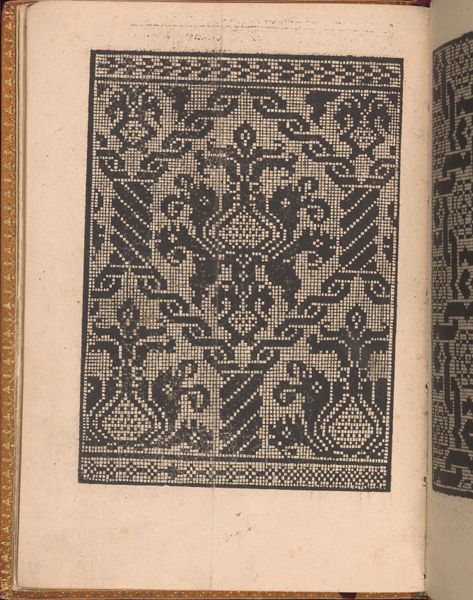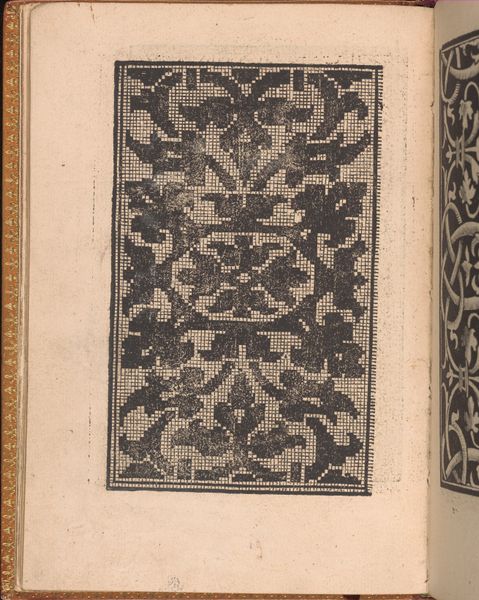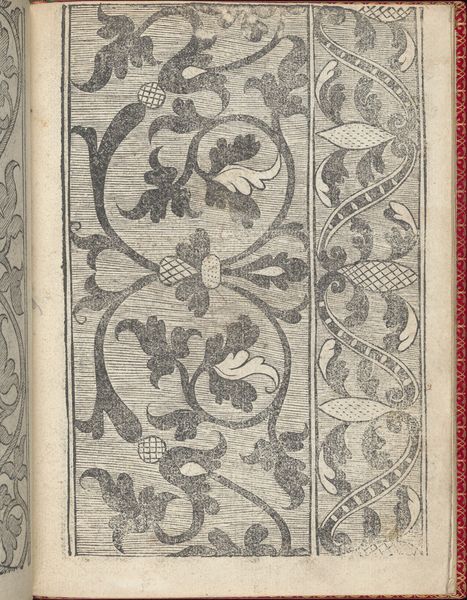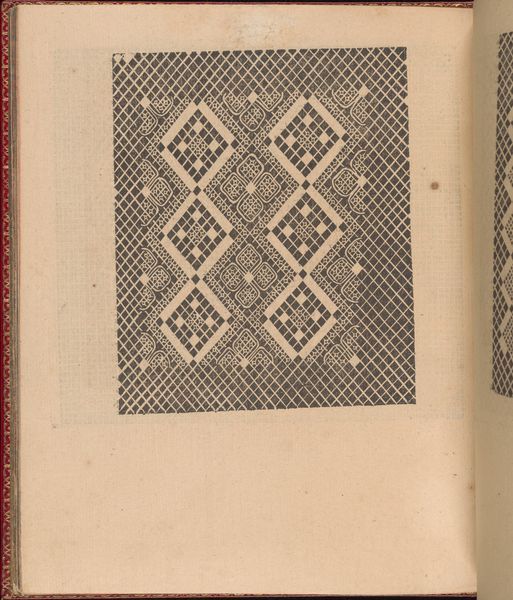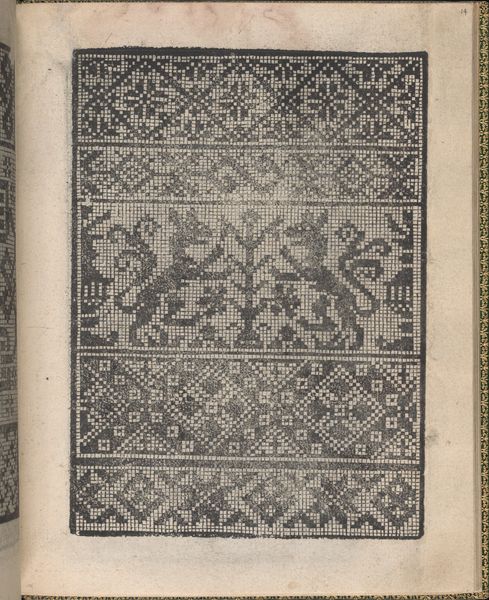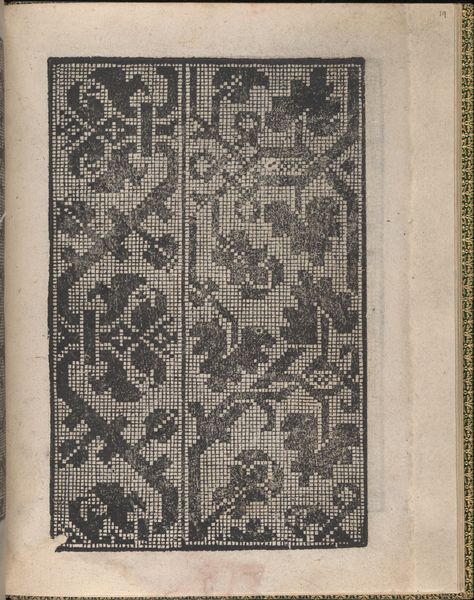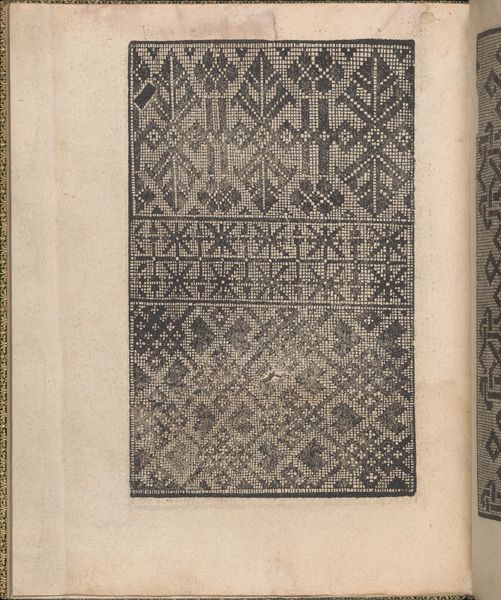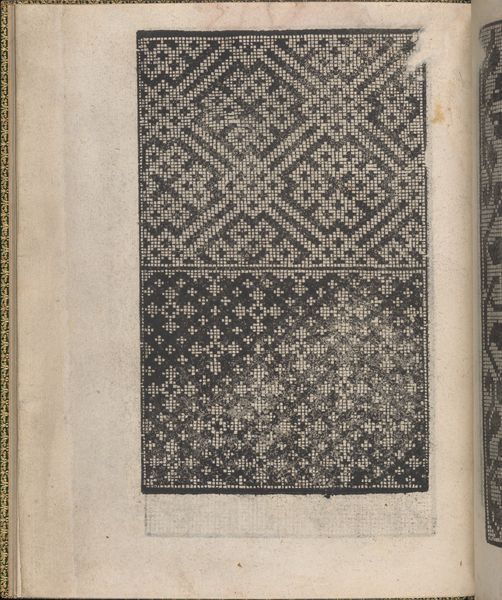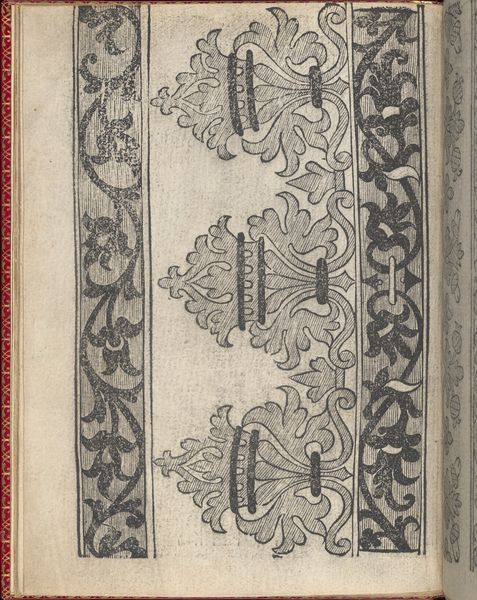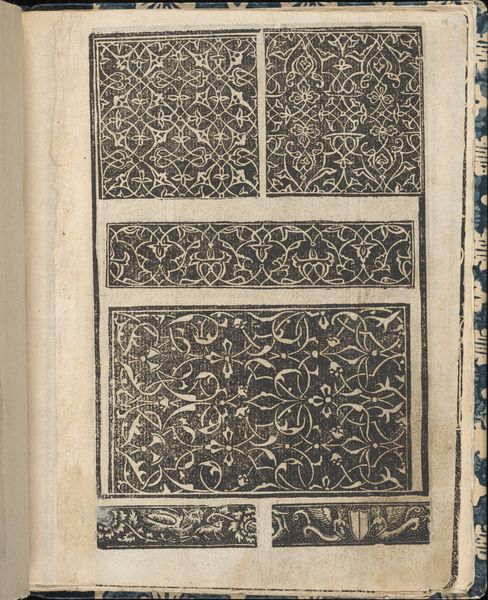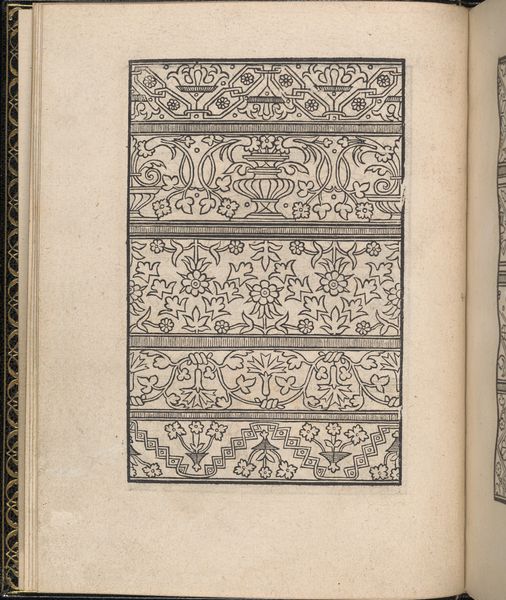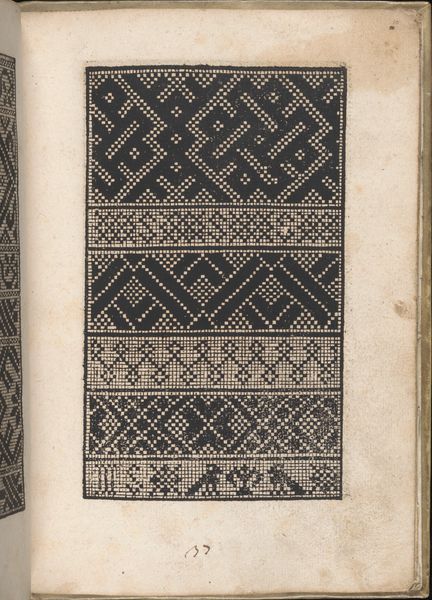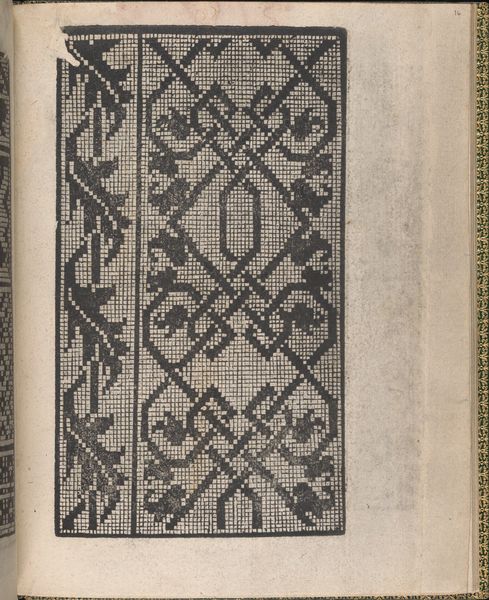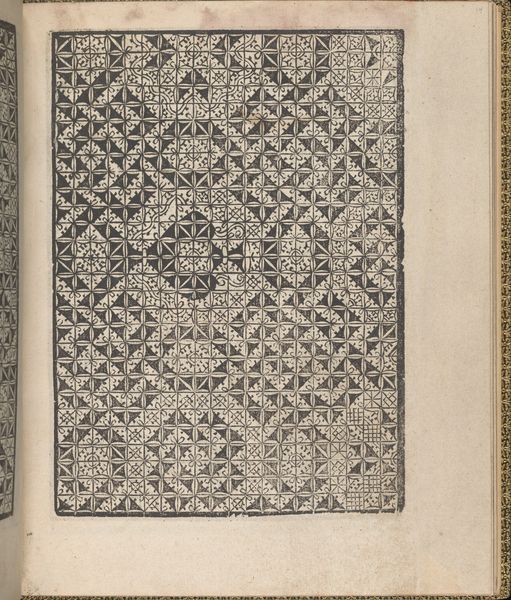
Ornamento delle belle & virtuose donne, page 18 (verso) 1554
0:00
0:00
drawing, graphic-art, print
#
drawing
#
graphic-art
# print
#
11_renaissance
#
geometric
#
italian-renaissance
Dimensions: Overall: 7 1/2 x 5 7/8 in. (19 x 15 cm)
Copyright: Public Domain
Editor: This is page 18 from "Ornamento delle belle & virtuose donne," created by Matteo Pagano in 1554. It looks like a print or drawing, and it’s filled with these intricate geometric patterns. I’m immediately drawn to the almost dizzying effect of the repeated shapes. What do you see in this work? Curator: I see a powerful intersection of art and gender, revealing the often-overlooked contributions of women in the Renaissance. This wasn't just decorative, it was functional. The patterns here, executed using graphic arts techniques like woodcut, provided templates for lace making and embroidery, skills central to a woman's role and economic contribution within the household. Editor: So, it’s practical art? Like a DIY guide from the 16th century? Curator: Exactly! And we must examine these guides within their historical context, thinking critically about the expectations placed on women during that time. Skills such as lace making were socially imposed yet valuable. How might a woman, through skillful execution of these designs, subtly express creativity or even resistance within those constraints? Editor: I hadn’t thought about it that way. The repetition initially seemed purely decorative, but understanding its purpose, it's easier to see that it might represent so much more about women’s lives then. Curator: Precisely. Considering the social realities allows us to read these images as complex records of labor, skill, and perhaps even subtle acts of self-expression. Editor: I'm now looking at this piece of graphic art with new eyes! Thank you. Curator: My pleasure, and hopefully our listeners also will now examine the gendered power dynamics encoded within seemingly simple objects.
Comments
No comments
Be the first to comment and join the conversation on the ultimate creative platform.
